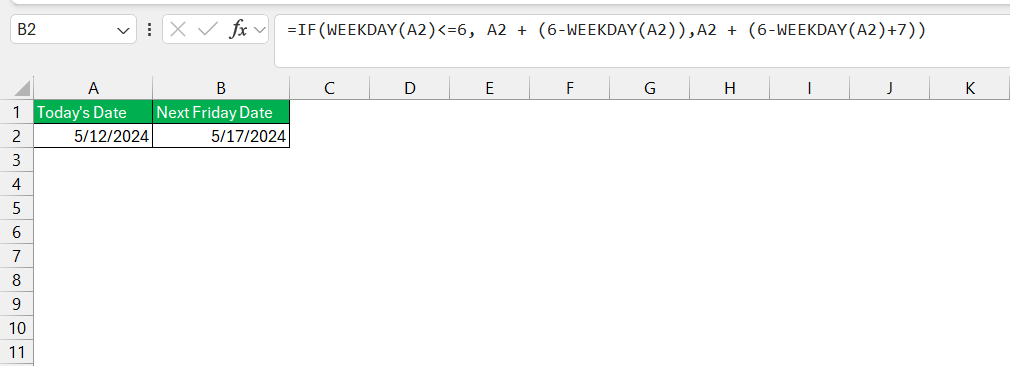Getting the next occurrence of a specific day, such as Friday in Excel is pretty easy with a formula. I’ll show you how to do this step by step!
Using the WEEKDAY Function to get Next Friday
The WEEKDAY function in Excel returns the day of the week as a number (1 for Sunday, 2 for Monday, and so on). We can calculate the number of days to add to the current date to reach the next Friday.
=IF(WEEKDAY(A2)<=6, A2 + (6-WEEKDAY(A2)),A2 + (6-WEEKDAY(A2)+7))
- The WEEKDAY(TODAY()) function returns the current day of the week.
- If the current day is on or before Friday (represented by a number less than or equal to 6), we add the difference between the current day and Friday to the current date.
- If the current day is Saturday or Sunday, we add the difference plus 7 to ensure we get the next Friday.
Table of Contents
Frequently Asked Questions
Can these formulas handle holidays or non-working days?
No, these formulas focus on determining the next Friday based on the current date. You may need additional logic to exclude holidays or non-working days from calculations.
What if I need the next Friday date for a date other than today?
You can replace the TODAY() function with the desired date in the formulas to calculate the next Friday date from a specific date.
How can I incorporate time along with the next Friday date?
You can concatenate time values with the next Friday date using the TEXT function or use the DATEVALUE function to combine date and time values.
John Michaloudis is a former accountant and finance analyst at General Electric, a Microsoft MVP since 2020, an Amazon #1 bestselling author of 4 Microsoft Excel books and teacher of Microsoft Excel & Office over at his flagship MyExcelOnline Academy Online Course.








